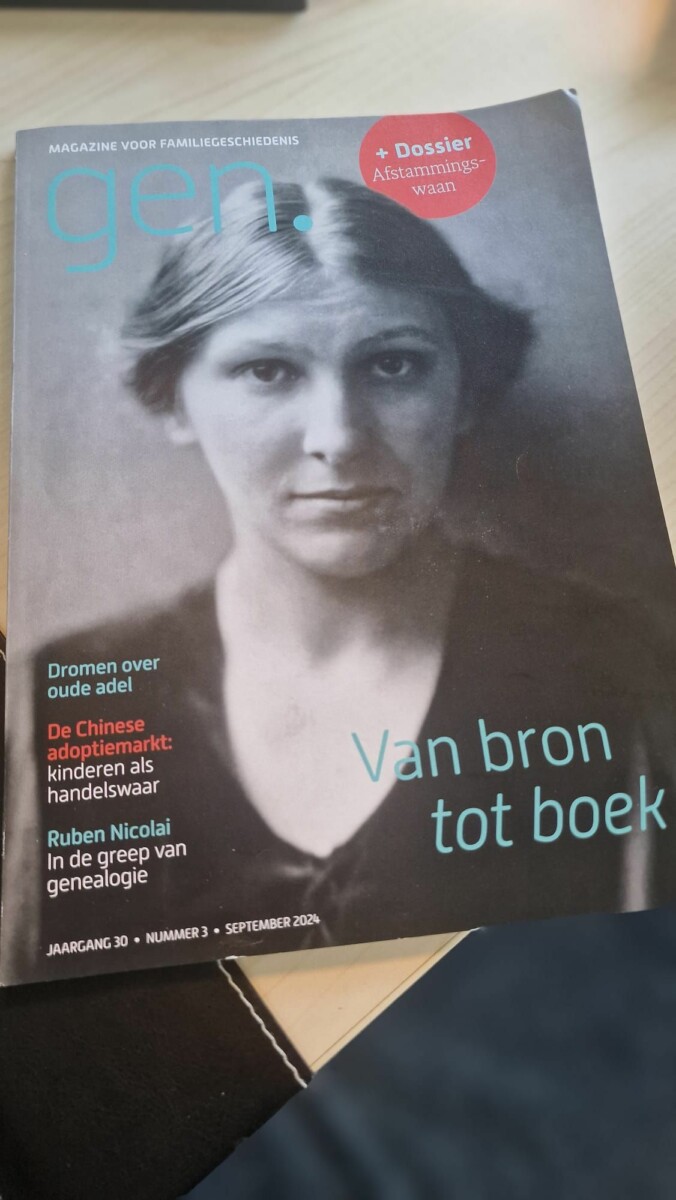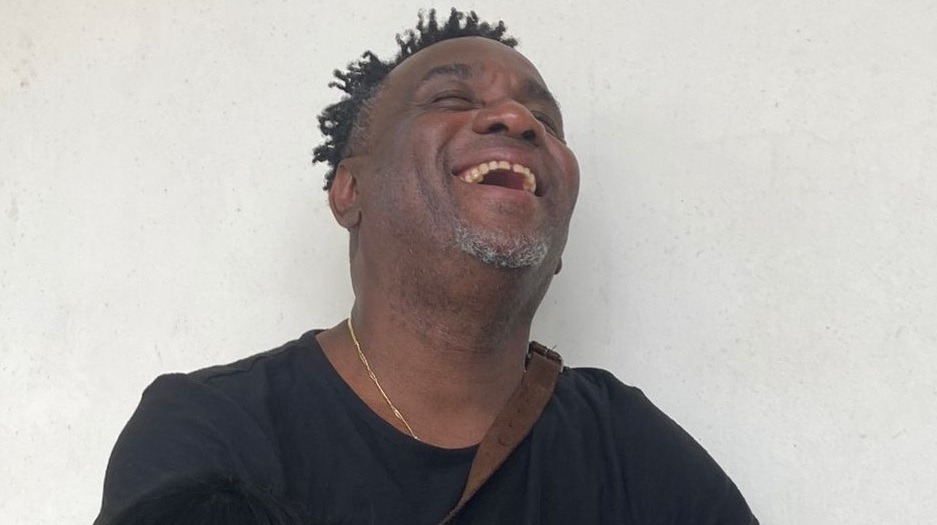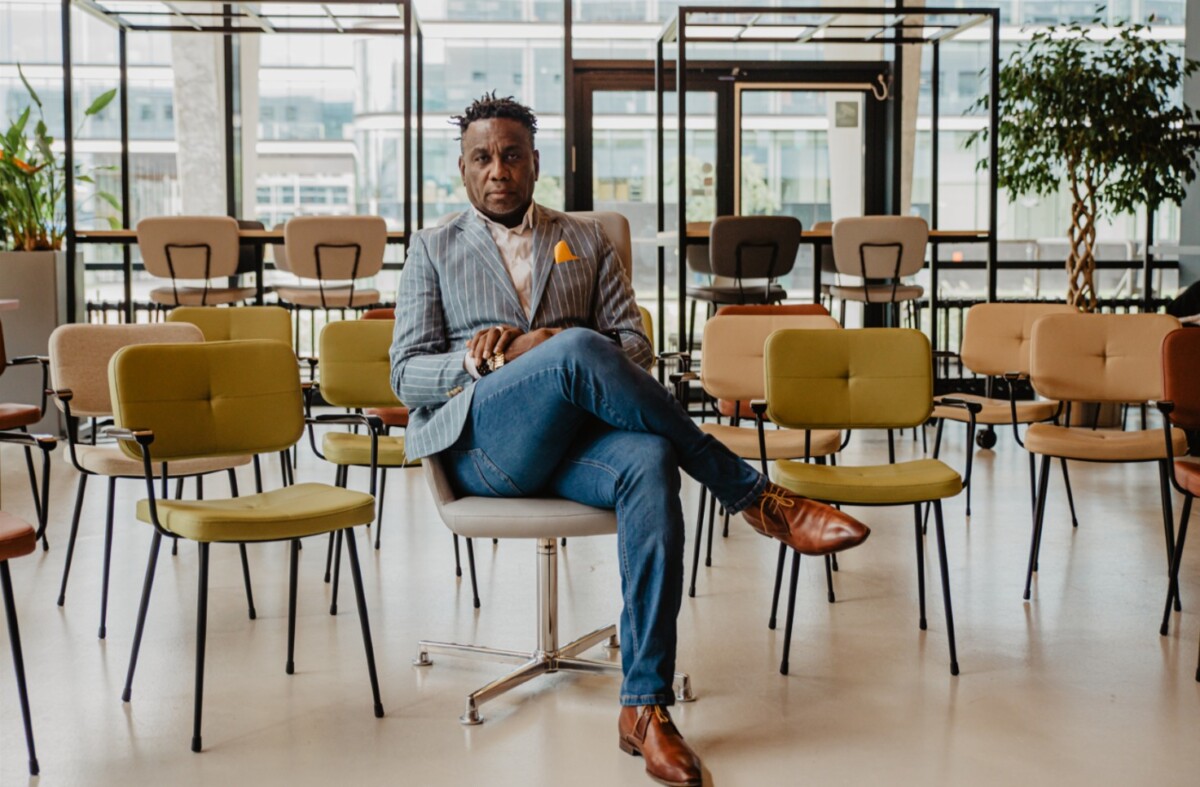By Marvin Hokstam
AMSTERDAM — It was only on Sunday afternoon when Mitchell Esajas finally had some spare time since winning an anti-racism verdict on November 9 against the 35 “blockade Frisians”. Not one to dive into lavish victory celebrations, he spent that spare time in the gym, with the cling-clang of the barbells and dumbbells as a perfect undertone to his ‘life-goes-on’ mood. But he remained acutely aware of the win nonetheless. “Yes, no doubt. This feels like what it is: victory,” he grinned.
Esajas (30) and other protestors were on their way to Dokkum, a city in the northern province of Friesland to stage a peaceful protest against zwarte Piet on November 18 2016, when they encountered a mob of angry locals who had set up a roadblock on the A7 highway. A tense hour followed, after which the protestors were escorted out of the province and the demonstration was called off.
The Frisians who considered themselves heroes that had prevented that their innocent children’s festivity would be ruined by protests, were nonetheless slapped with criminal charges. The verdicts that were read in the court in Leeuwarden last week were crushing, ranging from 120 to 240 hours community service and even a month conditional prison time.
“I am happy the judge was able to remain impartial. He gave a clear signal that we cannot tolerate this kind of behaviour in our society. And that these people are not above the law. This was in a way a ground-breaking verdict, (because) it concerned a case that transcended zwarte Piet. This was about fundamental human rights that the Blockade Frisians had violated,” Esajas said.
While many people insist that zwarte Piet is an innocent folklorist character in the festive Sinterklaas parades, opponents decry him as a painful racist stereotype; he is portrayed with thick black curly hair, thick accentuated red lips and hoop earrings, much like enslaved Africans would supposedly look a few centuries back. That he is often played by white people with their faces blacked, his speech is heavily accentuated and almost unintelligible, while he does funny caprioles to entertain his master and his guests, is clearly a prejudiced stereotype of black people, the opponents say.
It was not the first time that Esajas was party to a win in a zwarte Piet verdict. A former University of Amsterdam UVA counsellor who now runs The Black Archives, he has forever been one of the driving forces behind the demonstration against the blackface caricature. “In 2015 we already won a case against people who hurled racists slurs and threats against us. But this is different. The injustice from the Blockade Frisians was confrontational and upsetting. And not just for me, but for everybody in the bus that day. It was very threatening,” he said.
During the court-trial he read out a ‘victim statement’ in which he painted a picture of how it felt being in the bus on the way to Dokkum when the angry mob forced them to the side of the road. “I have been to many demonstrations, but this was by far one of the most fearful moments in my life. After they forced us to stop, these men stormed toward to our bus with their fists balled. The aggression was tangible, and we were afraid that they would enter the bus to attack us physically,” he said.
He said the moment left him traumatized to the point of not being able to fully do his job at the university. He also told of the female bus driver who was left too afraid to drive afterward and a young fellow protestor who got a concussion after he bumped his head. “The dangerous action by the suspects has caused a large group of people, including me, to be afraid to observe their right to free speech and protest. These suspects have caused us emotional injury.” His statement weighed heavy when the judge considered his verdict against the Blockade Frisians.
Esajas can nonetheless still find comedic value in the trial. “It was like a slapstick comedy, as they were called in front of the judge, one by one, to accept accountability for what they did. All of them seemed to believe that they were being railroaded. That they had been in their right to do what they did. But then when they stood in front of the judge, each still had a different account of what had happened.”
He said the atmosphere in the courtroom was tense. “There were four or five us with our lawyers. Everybody else was Frisian; the blockaders and their attorneys. It felt like those old black and white pictures of the civil rights movement in the US; the hate in the eyes of angry people as they looked at people who fought against segregation. Every time I looked around, I looked into angry faces of people who seemed to think they could intimidate me. Such negative energy. But it was also very comical.”
He laughed out loud when he talked about how the suspects reacted when they heard that he had infiltrating them. “Someone who had already infiltrated their Facebook group, tipped me off that they were considering putting up a blockade, so I made a fake account and asked to join. They let me in and I could indeed see their discussions about the roadblock they were planning. But it was in Frisian, so I could not understand much. And it was very chaotic. I thought then that I should not take this seriously. In hindsight, maybe I should have.”
He shook his head at the thought that the convicted Frisians are now considering to appeal their verdict. “Do they really think they can win in appeal? Then they really have not learned anything from this verdict. This is what fancied superiority does to people; in the face of a verdict like this they are still convinced they were right to block people’s rights and put people’s lives in danger.”
He said that it’s regretful that “these people allowed others to use them like this. Every time we go outside of the Randstad to protest, we encounter these types of people who do the dirty work. You never see the dominant educated ones with the bank jobs, who run businesses and so on, who support these actions online. But make no mistake: they are not on the foreground, but they are right behind the stormtroopers.”
He said that despite all of this he remains hopeful. “I see good developments. Ten years ago polls were indicating that almost 90 percent of the Dutch people wanted no change to zwarte Piet; these days the numbers are dwindling. There is a cosmopolitan midsection that resides predominantly within the Randstad, that is disgusted by these extreme actions, and are siding with us. So in a way these extreme actions by these extremist people are driving people to us. And, last week the police announced that they are phasing out zwarte Piet at their own Sinterklaas festivities. Those are good things.”
He said he will not stop fighting. “This victory is not the end. I have three things that drive me: one is a deeply rooted sense against the injustice that has befallen people of African origin since the days of slavery, colonialism, up to now. That makes my fight a commitment. Two is that I will not move aside and bow my head simply because people like the Blockade Frisians want to take away our rights. That only makes me want to fight more. And three is that I know a lot of stories of people who have been called zwarte Piet because of their skin colour. That hurts. I do this for our children. I do not want them to go through that too.”
This article also appeared in The Daily Herald






